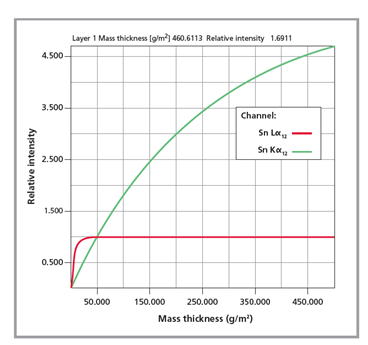For thickness and composition analysis of thin film
Thin films and layered materials are ubiquitous. They have countless applications, ranging from jewelry, coated steels or other metals to integrated circuits, to mention a few. In the production of thin films and multilayers precise control of the thickness and composition is often essential.
By combining excellent reproducibility with a non-destructive measurement, XRF is a highly valuable technique for analysis of composition and thickness of thin films. The reproducibility of a thickness measurement by XRF can be as good as ±1 Ångstrom.
Traditionally, the XRF calibration process for thin film analysis has been challenging, specifically for multilayer structures. Generally, calibration samples are required with a similar structure and composition as the samples to be analyzed. These calibrations samples are typically costly and hard to obtain, if available at all.
Stratos further enhances the value of XRF in your thin films metrology process by greatly simplifying and improving the flexibility of the XRF calibration process. Stratos allows the use of calibration samples dissimilar to the unknowns, and even allows the use of bulk materials to calibrate for thin films and multilayer analysis.

Stratos includes Virtual Analyst which allows to simulate the XRF response for complex structures, immediately demonstrating which fluorescent lines are best used to measure the variations in thickness and concentration levels relevant to your layers.
This greatly simplifies the method setup for thin film analysis.

The Stratos module comprises of a software license for Malvern Panalytical XRF instruments including Zetium, Axios or MagiX and the Epsilon benchtop range. It can be seamlessly combined with Omnian.
For systems that have Omnian installed, the Omnian setup can directly be used for thin film analysis using Stratos.
For systems without Omnian installed, the Omnian setup samples can still be used to setup Stratos.
The module can be delivered with new systems and retrofitted on existing instruments running SuperQ or Epsilon software.